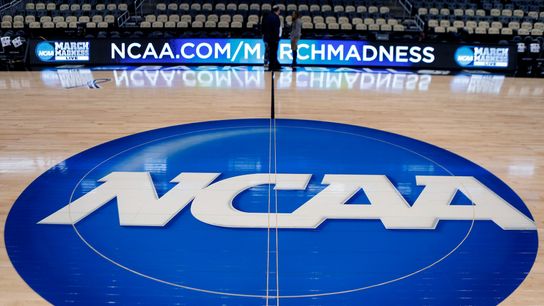United States District Court Judge Claudia Wilken aggressively questioned both the NCAA representatives and plans to drastically eliminate roster spots and reduce overall roster sizes in numerous sports as the House Settlement hearing got its much-anticipated day in court Monday in Oakland, California.
Wilken listened to a number of athletes from multiple sports who decried the roster parameters of the proposed House Settlement, which would grant 10 years' backpay to former NCAA athletes worth billions of dollars and bind schools who opt-in to the proposed agreement to revenue-share billions of dollars into the future.
If the measure does pass, NCAA members who opt in to the agreement can begin revenue-sharing with student-athletes on July 1. The maximum threshold for sharing in Year is distribution by an individual institution of $20.5 million.
Schools in Power Conferences are expected to widely distribute the largest portion of the revenue-share to their football programs, with Big Ten and SEC schools, as well as Notre Dame, projecting to devote $15-16 million of the proposed $20.5 million, per numerous reports and multiple sources who spoke to FootballScoop. The ACC and Big 12 are still expected to devote at least $12m to their league football members.
But Wilken in court focused particularly on the settlement arranging terms -- essentially speaking for -- potential future NCAA student-athletes who might just now be in "middle school."
Attorney Rakesh Kilaru, who is based in Washington, D.C., and representing college athletics' top governing body in this case, argued the organization's points at length for capping roster sizes and the need for reductions almost entirely across the board but perhaps most discussed as it has pertained to football. NCAA college football rosters are projected to go from 120 players to 105 as per terms of the proposed House Settlement, which has been agreed to by both sides but not yet ratified in court.
Rakesh today told Wilken, "Roster limits are part of the overall deal ... and those players could be cut regardless of the settlement."
Moreover, Wilken acknowledged that roster spots for non-scholarship student-athletes long have not been guaranteed. However, there were discussions that the changes to roster sizes across all the NCAA sports -- not just the football reduction -- could be phased in and that current student-athletes could be "grandfathered in" to their spots, i.e., protected from being cut in the coming weeks and months as the settlement -- if formally approved -- is enacted.
Wilken said late Monday afternoon that she would not rule from the bench today on the House Settlement.
She added, per various reports, "Whether the settlement is approved will happen by written order" and could potentially take additional weeks.
A prominent Power Conference athletics director told FootballScoop Sunday night that the general hope had been that the House Settlement could be approved by week's end.
Both administrators and coaches across multiple sports told FootballScoop within the past week that any type of final ruling and clarification is needed as soon as possible. The key factors for timing: funding the revenue distribution (some schools told FootballScoop budget cuts are being planned across wide swaths of athletics departments in order to help reach the $20.5 million Year 1 figure), providing clarity for the coaches for roster management now and moving forward; to provide student-athletes the most possible time to make decisions on their futures (stay in school as a regular student or perhaps seek an opportunity to play elsewhere) in case roster limits are approved.
Two particular things of note that football coaches and administrators specifically told FootballScoop across the past week:
Cuts are coming with this proposed settlement, and plans are being made now. Multiple FBS coaches, from head coaches to assistants, told FootballScoop in recent weeks that "105" has become one of the most-heard terms on spring practice fields. Everyone is aware of the target roster number and what's at stake.
Also, while schools can carry a maximum of 105 football players on roster per terms of this agreed-upon, not-yet-approved settlement, it does not mean a school cannot encourage those additional students to remain on campus for a potential call-up opportunity.
In other words, think of almost like the "taxi squad" that Major League Baseball teams carried during the COVID-19-shortened 2020 season, when clubs could keep a handful of players ready and nearby to call up to the MLB team in case a player tested positive for COVID and had to be quarantined.
Schools, several coaches told FootballScoop, may seek to ask players to remain on campus as regular students with hopes of being "called up" to the active roster due to attrition or injuries.
Key point: Judge Wilken just said this "isn't a Title IX case," and it's not a labor or employment law case and whether the settlement conflicts with state NIL statutes is not at issue. That's a big positive for NCAA and players' attorneys. Reduces potentially viable objections.
— Michael McCann (@McCannSportsLaw) April 7, 2025
